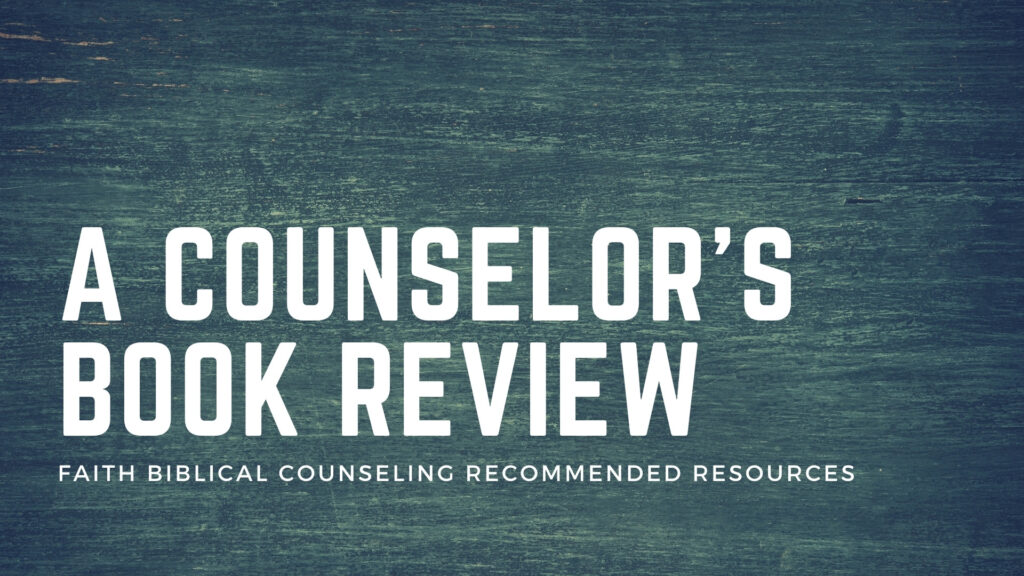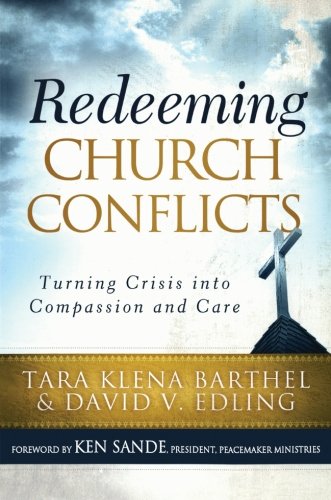
One of the books listed as an option for required reading as part of the education phase for ACBC’s Reconciliation Specialization is Tara Barthel’s and David Edling’s, “Redeeming Church Conflicts: Turning Crisis into Compassion and Care.” Barthel and Edling both have experience as attorneys and worked together at Peacemaker Ministries. There are a number of ideas and illustrations in this book taken from Peacemaker resources. Ken Sande, founder of Peacemaker Ministries, wrote the forward.
Summary of Content
Before the first chapter begins, the authors are careful to lay out a model through which to view church conflict in two ways. First, a case study is introduced. This case study will be referenced throughout the book in order to see real examples of the principles being put into practice and how the church responded. Second, the account of the Jerusalem Council in Acts 15 is utilized to provide the biblical foundation of the book’s approach. The example of the church’s actions in Acts 15 is broken down into four categories: Perspective, Discernment, Leadership, and Biblical Response. These four categories become the four sections in the book (Four chapters per section).
The main idea of the first section is that when the church is overwhelmed with conflict, there has been a shifting of perspective away from the glory of God, the truths of the gospel and the mission of the church. Instead, there is a focus within the church on their different desires accompanied by emotionally invested responses. When this is the case, it can be crucially important to get help from outside. Counselors with an ability to view the situation from without and who can help those involved get their focus back on the Lord and the biblical process for resolution could be needed.
Once the smoke of all the presenting problems in a church conflict clears, it is time to dig deeper by asking good questions and listening in order for everyone to gain discernment. Helpful advice is given in order to facilitate this discussion among the church’s members well: Conflicted conversations are usually full of strong emotions. Expect miscommunication and misunderstandings. In order to help remedy this, terms should be defined. Emphasize agreement thereby building trust during the process. Be flexible and charitable. Further help is given for the occasions where conflict has spread and produced factions or mob mentality in the church.
The third section of this book recalls that in the Jerusalem council (Acts 15), after discernment was sought, the leaders led. Furthermore, once the leaders led, people followed their leadership. This is necessary in the process of resolving conflict in the church, and in pursuing church health in general. Areas of typical failure among leaders and reminders of typical membership vows (Or Church Covenants) are brought to the reader’s attention in the chapters of this unit. In a way, these calls or reminders of what our purposes are within the church could fit into the idea of regaining proper perspective. When an elder or deacon, or any church member becomes aware of their own deviation from their God-given responsibility within the church, right perspective is gained. Then, Lord willing, repentance will soon follow.
Finally, once the leadership and membership of the church have done the hard work of gaining biblical perspective and asking questions to bring about proper discernment, a biblical response is required. This response will begin with the desire to bring glory to God and a willingness on the part of each person to own their own contribution to the conflict. In order to communicate decisions and implement action steps, there must be a willingness to speak (And hear) the truth in love and a willingness to forgive.
Two useful appendixes are included at the end which give a summary of the Acts 15 model and insights for choosing third-party conciliators should they be needed.
As a heads up, near the bottom of page 136, there is a paragraph where a hypothetical pastor from a church is referred to as, “he or she.” The paragraph itself speaks of a pastor pursuing change wisely only if “he or she” first does the hard work of laying a deep biblical foundation for that change. There is much great content in this book. Though I believe a deep biblical foundation would only allow for a “he” to serve as a pastor, I won’t be throwing away the rest of the book as a result of this area of disagreement.
Primary Area of Usefulness
It could be tempting to try to use the outline of this book as a formula, or as a step-by-step model for resolving any church conflict. But the authors are careful even in their introductory pages to guard against that impulse. The concepts of perspective, discernment, leadership, and biblical response are certainly needed in any reconciliation process, but the implementation of these principles will be exercised in multiple ways and in multiple times through the process of reconciliation. Having all of these in mind throughout the process will be crucial.
Example Uses of the Resource
Though it could be useful to remind the reader of biblical principles for peacemaking in any situation, this book has been written specifically to prepare Christians for the critical task of pursuing peace in the context of the local church. It could be utilized, as ACBC has chosen to do, as a training resource for those seeking to serve as counselors and conciliators. It could also be utilized with those involved in church conflict, though the counselor may do well to find other resources that would be more concise and specific to the issues at hand.
 Biblical Counseling
Biblical Counseling